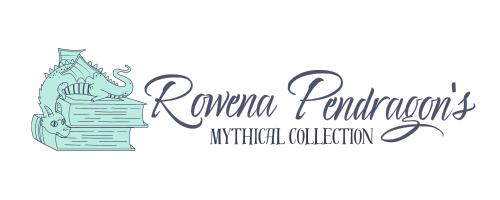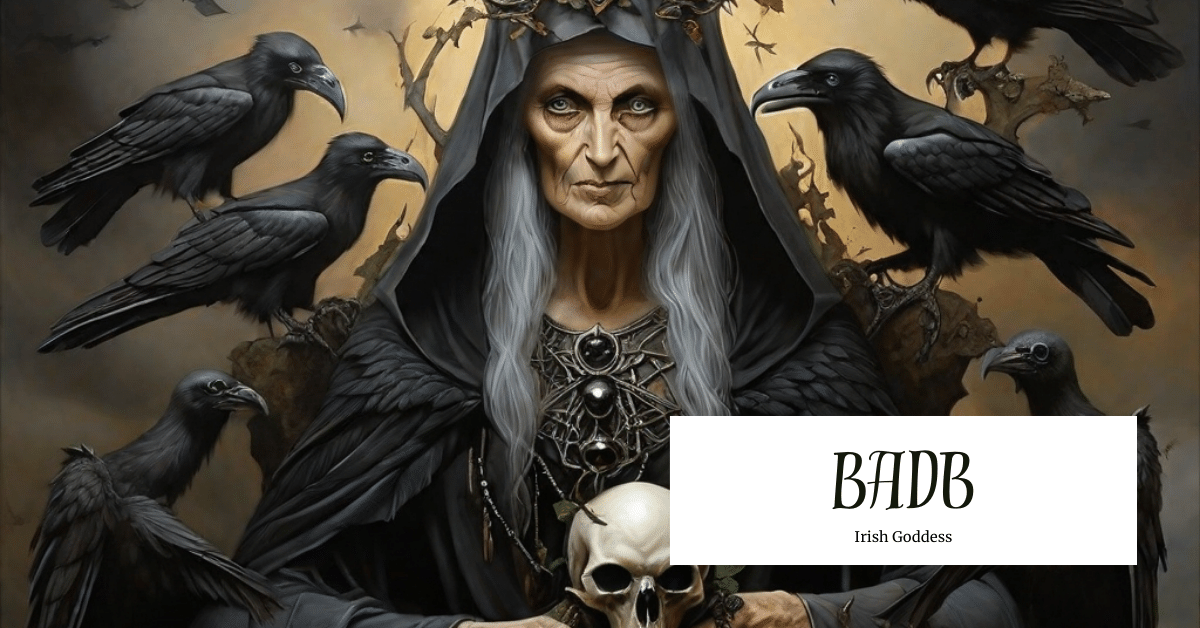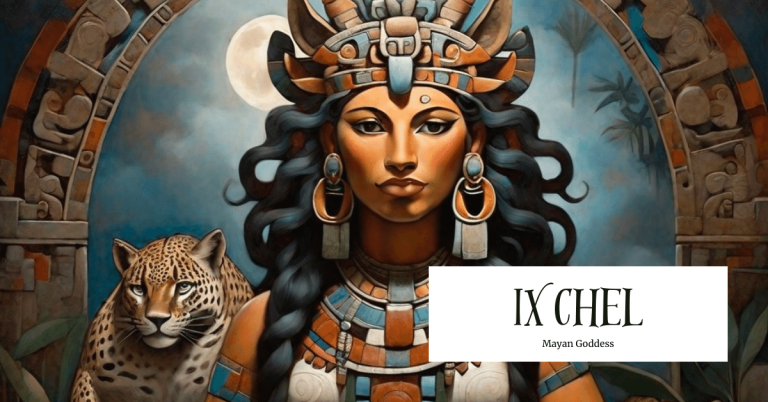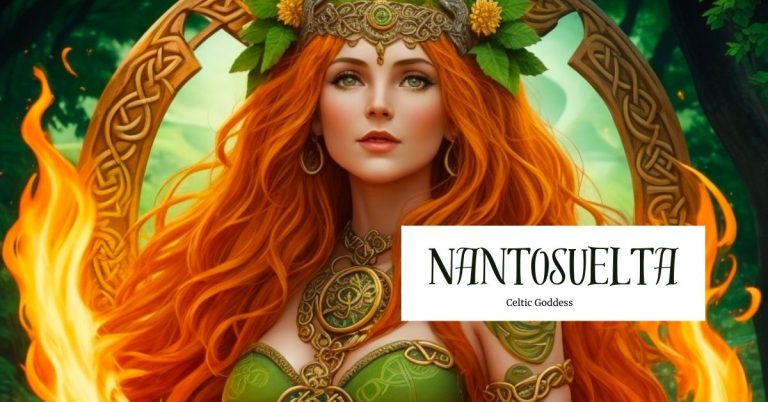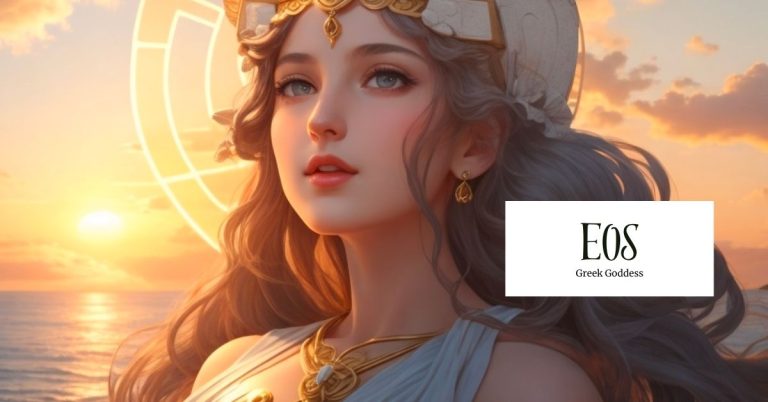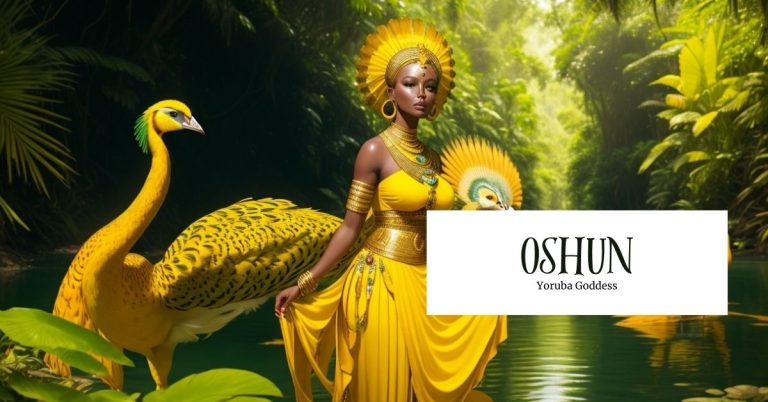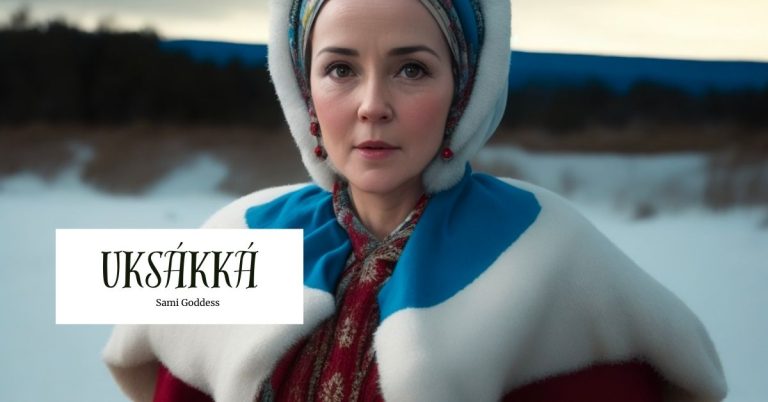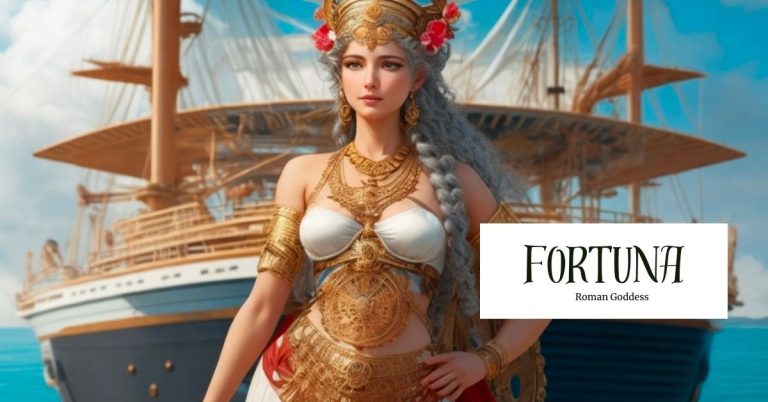Badb: Goddess of Death and War
Badb, the Goddess of death and war, is known as one of the sisters of Morrigan. From her fearsome presence on the battlefield, where she struck terror into the hearts of warriors, to her compassionate guardianship of the souls in the afterlife, Badb’s character embodies the dualities of existence.
The symbols associated with Badb, from the corvids that heralded battles to the mystical cauldron she tended in the Otherworld. These symbols offer insights into the cyclical nature of life and death, fate’s capriciousness, and the profound mysteries of the natural world.
Overview
Source: Mythology Source
Badb’s name, often translated as “crow” or “vulture,” reflects her strong association with these birds, which were believed to presage battles and foretell the impending doom of warriors. Badb is closely linked to the realm of warfare, where she employs her fearsome abilities to sow confusion and fear on the battlefield. Often appearing as a terrifying crone, her presence alone is enough to strike terror into the hearts of warriors.
She guides the souls of fallen warriors, offering them a choice of rebirth and overseeing their transformation in the afterlife. Badb is known for her ability to take on various forms, including crows and ravens, which were symbols of death and prophecy in Celtic culture. This shapeshifting aspect adds depth to her character and emphasizes her connection to the natural world.
Titles
- The Battle Crow
- The Bringer of Death
- Irish Goddess of War
- The Crow Goddess
- The Keeper of the Cauldron
- The Washer
Abilities
One of Badb’s most intriguing and ominous talents was her propensity to take an active role in the epic battles of Irish mythology. When conflict loomed on the horizon, she, along with her sisters, would make their presence known. Their arrival heralded a foreboding turn of events, as they would actively intervene to influence the outcome of these critical confrontations. Badb’s involvement could be likened to the capriciousness of fate itself, as she often played a hand in determining who would emerge victorious and who would meet their doom.
She was a goddess of war, fate, and the ever-present cycle of life and death. Her abilities to inspire fear, manipulate the outcome of battles, and foretell impending doom cemented her status as a formidable and complex figure in the pantheon of Irish deities. She embodied the darker aspects of the human experience, reminding all that, in the midst of glory and valor, the looming shadow of Badb could descend, bringing chaos and uncertainty to even the mightiest of struggles.
Characteristics
Source: Amino
One of the most common descriptions of Badb is that of a crone, an elderly woman. Her face is often depicted as that of an aged, wise woman. This portrayal emphasizes her role as a guardian of the Otherworld and a keeper of ancient wisdom. In some artistic representations, Badb may be adorned with clothing or accessories that symbolize her roles as a goddess of war, fate, and transformation. These can include elements like crow feathers, cauldrons, or other items associated with her mythology. It’s important to note that the descriptions of Badb’s physical characteristics can vary across different sources and artistic interpretations.
Traits
Badb is often portrayed as a fierce and formidable deity. She embodies the aspects of war and battle, and her presence on the battlefield strikes terror into the hearts of mortals. Her ability to inspire fear and confusion among warriors is a testament to her formidable nature. Despite her fearsome persona, Badb also exhibits protective and maternal qualities, particularly in her role as a guardian of the Otherworld. When appearing in the form of a kind old woman tending to her cauldron, she offers warriors a choice of rebirth, suggesting a nurturing and compassionate side.
As the Keeper of the Cauldron and a symbol of transformation, Badb embodies the cyclical nature of life and death. Her personality traits reflect this cyclical aspect, where she oversees the rebirth of warriors and the transformative power of her cauldron. The goddess Ceridwen is known for her cauldron and it’s possible there are overlaps in the two goddesses legends.
Badb’s personality is characterized by her divine status and immense power. She is not a deity to be trifled with, as her influence extends to matters of life, death, and the fate of nations. Her ability to shape the outcomes of battles and guide souls in the afterlife underscores her divine authority and dominion over important aspects of Celtic belief.
Symbols
Source: Timeless Myths
The very name “Badb” is often translated as the Irish word for a crow, directly linking her to this iconic bird. Crows and ravens, creatures of the corvid family, were pervasive throughout ancient Europe, and their association with war and disaster was nearly universal. In many cultures, they were seen as harbingers of doom and chaos, feeding upon the remains of the fallen on the battlefield.
This close connection between Badb and the corvids suggests that, in the collective psyche of ancient Europe, battle and black birds were virtually synonymous. The eerie presence of these birds circling overhead served as a grim reminder of the brutality and uncertainty of war, an ever-present motif in the lives of ancient peoples.
Festivals and Rituals
Water is the source of life, and by acknowledging it, we also recognize our connection to the goddess Badb. Begin your day with a simple gratitude ritual by taking a moment to express thanks for the water you’re about to drink. Hold the glass or vessel of water in your hands and visualize it as a purifying force, cleansing and nourishing your body. As you sip, feel its energy revitalizing you, leaving a trace of its essence within. In this act, you honor the life-giving aspect of water, which aligns with Badb’s role as a guardian of the Cauldron of rebirth.

Source: The Oracle Archives
These water rituals serve as a means to connect with Goddess Badb, inviting her presence and wisdom into your daily life. They allow you to pay homage to her roles as the Washer and the Keeper of the Cauldron, symbolizing the cyclical nature of existence and the transformative power of water.
Legends Associated with Goddess Badb
Goddess Badb, a formidable figure in Celtic mythology, is shrouded in legends that evoke both dread and fascination. Her origin story and mythical exploits reveal a complex deity entangled in the mysteries of war, prophecy, and the Otherworld.
Origin Story
Source: Dark Goddess Musings
The origins of the Celtic goddess Badb are deeply intertwined with the eerie presence of crows and ravens that haunted the aftermath of ancient battles. As these black-winged birds gathered on the blood-soaked battlefields, their keen intelligence and uncanny ability to anticipate the signs of impending conflict gave rise to the figure of Badb, a deity of both war and prophecy.
In the wake of countless battles, these birds were a ubiquitous sight. They learned to recognize the telltale signs of impending warfare – the gathering of warriors, the clinking of armor, and the tension in the air. These astute creatures sometimes became omens themselves, appearing on the battlefield before the first clash of weapons, foreshadowing the coming storm of violence and chaos.
In addition to her connection to the ravens, Badb’s matrimonial history is equally enigmatic and significant. She was wedded to Neit, a god of war, cementing her position as a central figure in the pantheon of battle and conflict. This union was unique in that it extended to her sisters as well, emphasizing the strong familial ties that bound these powerful goddesses together.
Dreams on the Battlefield
Source: Celtic Mythology
One of the most prominent stories featuring Badb is the epic recounting of The First and Second Battle of Magh Tuired. In these tales, Badb, along with her sisters, wove confusion and terror into the hearts of their enemies. With their ethereal presence and uncanny abilities, they inspired dread among those who crossed their path, turning the tides of battle in their favor.
But Badb’s legend extended far beyond the battlefield. She was believed to hold a crucial role in the Otherworld, where the boundaries between life and death blurred. Here, she tended to a magical cauldron, a symbol of transformation and rebirth. The name “Badb” itself translates to “the one who boils,” alluding to her mastery of this mystical vessel.
In the realm of the afterlife, warriors who had met their demise on the battlefield would encounter Badb. She would appear before them in the guise of a kind old woman, gently stirring her cauldron. It was then that she presented them with a choice – to remain in the Otherworld or to be reborn into the mortal realm. Those who chose rebirth would climb into the cauldron, and Badb, with her wisdom, would peer into its waters to glimpse the form the warrior would take upon their return. The vision could range from a human baby being born to an animal with cubs, symbolizing the cyclical nature of existence and the potential for renewal.
Badb Against the Queen
Source: Mythology Source
On the eve of many a battle, Badb would appear in her avian form, either as a crow or a raven, heralding the violence and carnage that was soon to engulf the battlefield. Her presence alone was a chilling omen, foreshadowing the imminent clash of swords and the spilling of blood.
But Badb’s role extended beyond mere prophecy. In some legends, she assumed an even more fearsome guise—a hag who would emerge on the day before a battle to foretell the death of great warriors, such as the High King Conaire Mor. Her ominous predictions were a stark reminder of the relentless cycle of life and death in the Celtic belief system.
Yet, Badb’s powers went beyond mere divination. She possessed the ability to sew confusion and chaos amidst the turmoil of battle. In one notable account, when pitted against Queen Medb, Badb’s actions struck terror into the hearts of the queen’s soldiers. Her chaotic influence was so potent that it induced a panicked frenzy, leading many of the queen’s men to fall upon their own weapons in their desperate haste to flee the battlefield.
Perhaps one of the most spine-chilling episodes in Badb’s legend was when she cried out from within the very midst of the dead bodies strewn across the battlefield. Her eerie screams reverberated through the corpses, sending shivers down the spines of the surviving troops and further fueling the atmosphere of terror and pandemonium.
When Badb joined forces with her sisters, the Morrigna, their combined power transcended the mere scattering of foes. Together, they possessed the ability to enact profound and far-reaching changes on the mortal world. Their influence could tip the scales of fate, shaping the outcomes of battles and events with profound consequences
Influences on Other Cultures and Religions
The influence of the Celtic goddess Badb, as a part of the Morrigan triad, can be observed in the comparative studies of various religions. Modern scholars have drawn parallels between the tripartite nature of the Morrigan and the Catholic doctrine of the Holy Trinity. Both these theological constructs consist of a collection of individual beings or entities that together form a singular whole.
Source: Order of the Crows
The Morrigan, including Badb, embodies the concept of a trinity within Celtic mythology, representing distinct aspects of war, fate, and prophecy. Similarly, the Holy Trinity in Catholicism consists of the Father, the Son (Jesus Christ), and the Holy Spirit, distinct entities that together constitute the divine unity within Christianity. This parallel highlights the recurrent theme in human religious thought, where the idea of a threefold deity or divine unity manifests across different belief systems.
Modern Influences
Robert E. Howard’s “The Phoenix on the Sword” introduces readers to the world of Conan the Barbarian, where elements of Celtic mythology, including Badb, are interwoven into the narrative. In this context, Badb’s presence infuses the story with a sense of ancient mystique and the enduring allure of mythological figures.

Source: Barnes and Noble
The comic series “The Wicked + The Divine” delves into themes of divinity, fame, and mortality, featuring gods and goddesses who manifest in human form every ninety years. Badb’s appearance in this series serves as a contemporary reinterpretation of her character, exploring the complexities of divinity in the modern world and how ancient deities might adapt to changing times.
Final Thoughts
Her dual nature as a fearsome war goddess and a compassionate guardian of the Otherworld serves as a poignant reminder of the intricate tapestry of Celtic mythology. She teaches us that life’s most profound truths are often found in the paradoxes, where chaos and order, fear and compassion, and death and rebirth coexist.
In the symbols that surround Badb—the circling corvids, the mystical cauldron, and the inexorable forces of fate—we discern reflections of the timeless mysteries that have captivated human imagination for millennia. Her story is not just a relic of the past but a living testament to the enduring questions that shape our understanding of the natural world and the divine.
